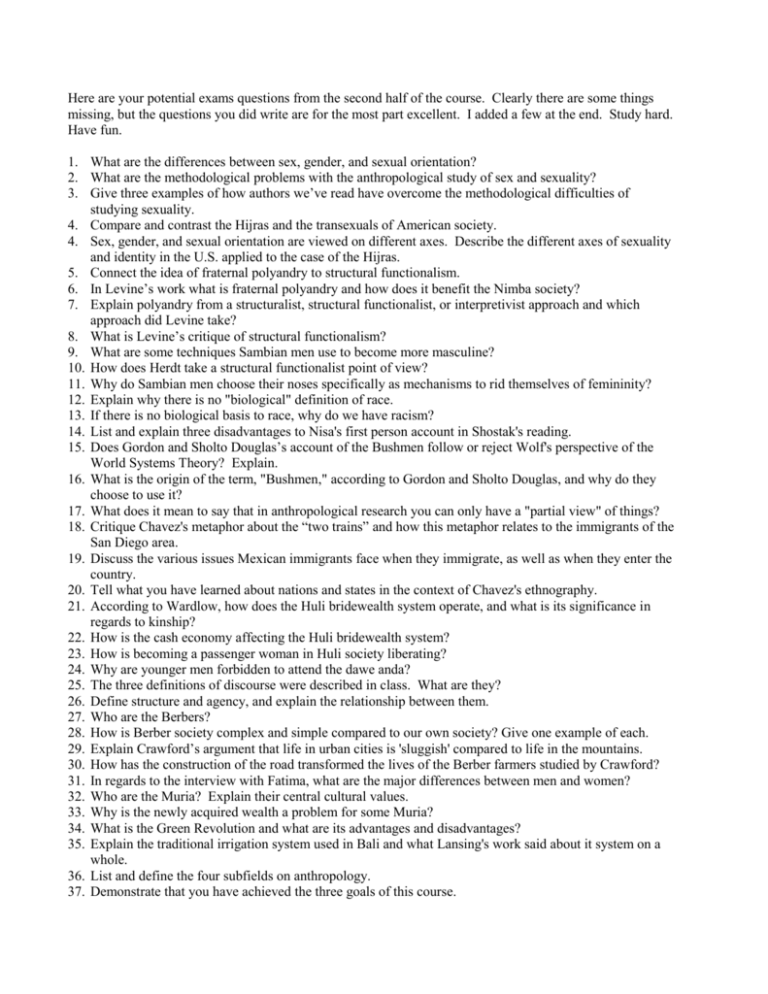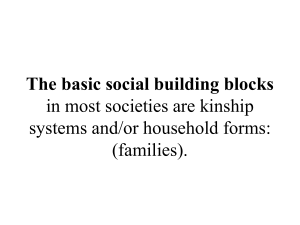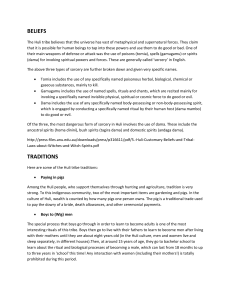
Here are your potential exams questions from the second half of the course. Clearly there are some things
missing, but the questions you did write are for the most part excellent. I added a few at the end. Study hard.
Have fun.
1. What are the differences between sex, gender, and sexual orientation?
2. What are the methodological problems with the anthropological study of sex and sexuality?
3. Give three examples of how authors we’ve read have overcome the methodological difficulties of
studying sexuality.
4. Compare and contrast the Hijras and the transexuals of American society.
4. Sex, gender, and sexual orientation are viewed on different axes. Describe the different axes of sexuality
and identity in the U.S. applied to the case of the Hijras.
5. Connect the idea of fraternal polyandry to structural functionalism.
6. In Levine’s work what is fraternal polyandry and how does it benefit the Nimba society?
7. Explain polyandry from a structuralist, structural functionalist, or interpretivist approach and which
approach did Levine take?
8. What is Levine’s critique of structural functionalism?
9. What are some techniques Sambian men use to become more masculine?
10. How does Herdt take a structural functionalist point of view?
11. Why do Sambian men choose their noses specifically as mechanisms to rid themselves of femininity?
12. Explain why there is no "biological" definition of race.
13. If there is no biological basis to race, why do we have racism?
14. List and explain three disadvantages to Nisa's first person account in Shostak's reading.
15. Does Gordon and Sholto Douglas’s account of the Bushmen follow or reject Wolf's perspective of the
World Systems Theory? Explain.
16. What is the origin of the term, "Bushmen," according to Gordon and Sholto Douglas, and why do they
choose to use it?
17. What does it mean to say that in anthropological research you can only have a "partial view" of things?
18. Critique Chavez's metaphor about the “two trains” and how this metaphor relates to the immigrants of the
San Diego area.
19. Discuss the various issues Mexican immigrants face when they immigrate, as well as when they enter the
country.
20. Tell what you have learned about nations and states in the context of Chavez's ethnography.
21. According to Wardlow, how does the Huli bridewealth system operate, and what is its significance in
regards to kinship?
22. How is the cash economy affecting the Huli bridewealth system?
23. How is becoming a passenger woman in Huli society liberating?
24. Why are younger men forbidden to attend the dawe anda?
25. The three definitions of discourse were described in class. What are they?
26. Define structure and agency, and explain the relationship between them.
27. Who are the Berbers?
28. How is Berber society complex and simple compared to our own society? Give one example of each.
29. Explain Crawford’s argument that life in urban cities is 'sluggish' compared to life in the mountains.
30. How has the construction of the road transformed the lives of the Berber farmers studied by Crawford?
31. In regards to the interview with Fatima, what are the major differences between men and women?
32. Who are the Muria? Explain their central cultural values.
33. Why is the newly acquired wealth a problem for some Muria?
34. What is the Green Revolution and what are its advantages and disadvantages?
35. Explain the traditional irrigation system used in Bali and what Lansing's work said about it system on a
whole.
36. List and define the four subfields on anthropology.
37. Demonstrate that you have achieved the three goals of this course.
38. In Lansing’s article “The Gods and the Green Revolution,” how does the change in the Balinese rice
farming give support to modernization theory? How does it support World Systems Theory?
39. It is often thought that modern civilizations are more complex than rural, traditional societies. Using two
of the readings from this course, show how this idea is not true.
40. How does Ibarra’s account of the Mexicana care takers and Shostak’s first person narrative of Nisa differ
from the other ethnographies that we’ve read?
41. Choose three readings from the second half of the course and explain how they were influenced by Boas.
42. Choose three readings from the second half of the course and explain how they were influenced by Tylor.
43. Choose three readings from the second half of the course and explain how they were influenced by
Malinowski.
44. Choose three readings from the second half of the course and explain how they were influenced by
Geertz.
45. Choose three readings from the second half of the course and explain how they were influenced by Wolf.
46. Imagine you are going to do an ethnography of life in the Jesuit residence at Fairfield. How will you go
about it? What sorts of theoretical tools will you bring to bear for your analysis?
47. What is the difference between an ethnography and a novel?
48. At a cocktail party ten years from now you run into an anthropologist. What will you tell her you
remember from this course?
49. List three things from this course that helped you to better understand something from another course.
50. List three things from this course that contradicted something from another course.










